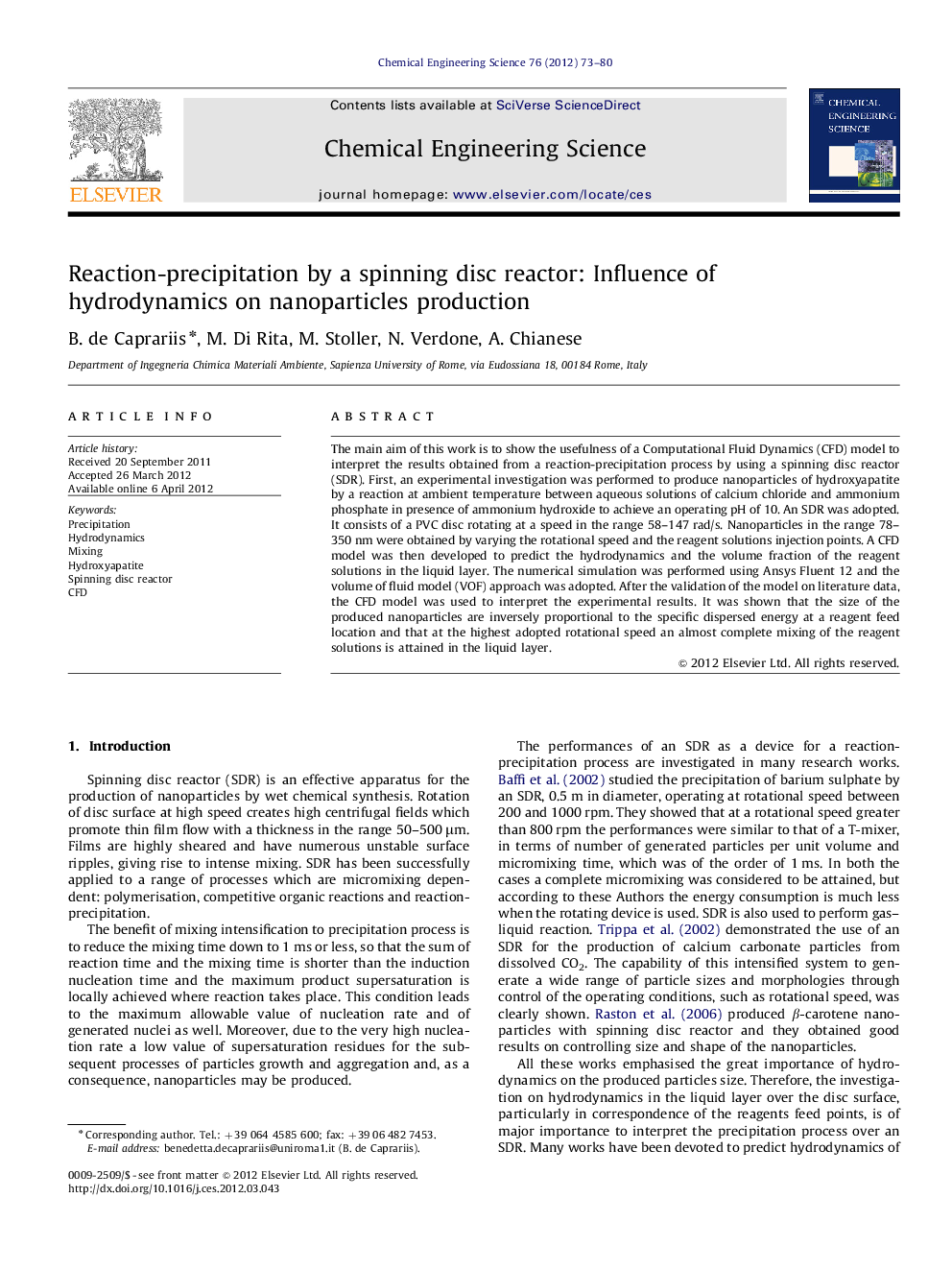| Article ID | Journal | Published Year | Pages | File Type |
|---|---|---|---|---|
| 155796 | Chemical Engineering Science | 2012 | 8 Pages |
The main aim of this work is to show the usefulness of a Computational Fluid Dynamics (CFD) model to interpret the results obtained from a reaction-precipitation process by using a spinning disc reactor (SDR). First, an experimental investigation was performed to produce nanoparticles of hydroxyapatite by a reaction at ambient temperature between aqueous solutions of calcium chloride and ammonium phosphate in presence of ammonium hydroxide to achieve an operating pH of 10. An SDR was adopted. It consists of a PVC disc rotating at a speed in the range 58–147 rad/s. Nanoparticles in the range 78–350 nm were obtained by varying the rotational speed and the reagent solutions injection points. A CFD model was then developed to predict the hydrodynamics and the volume fraction of the reagent solutions in the liquid layer. The numerical simulation was performed using Ansys Fluent 12 and the volume of fluid model (VOF) approach was adopted. After the validation of the model on literature data, the CFD model was used to interpret the experimental results. It was shown that the size of the produced nanoparticles are inversely proportional to the specific dispersed energy at a reagent feed location and that at the highest adopted rotational speed an almost complete mixing of the reagent solutions is attained in the liquid layer.
► Spinning disc reactors are high performance devices for nanoparticles production. ► Reactant mixing was simulated via CFD, varying rotational speed and inlet position. ► Raising rotational speed, mixing intensity increases and particle size decreases. ► At injection point, particle size and dispersed energy are inversely proportional. ► Mixing time is less than 1 ms, a time shorter than the induction nucleation time.
